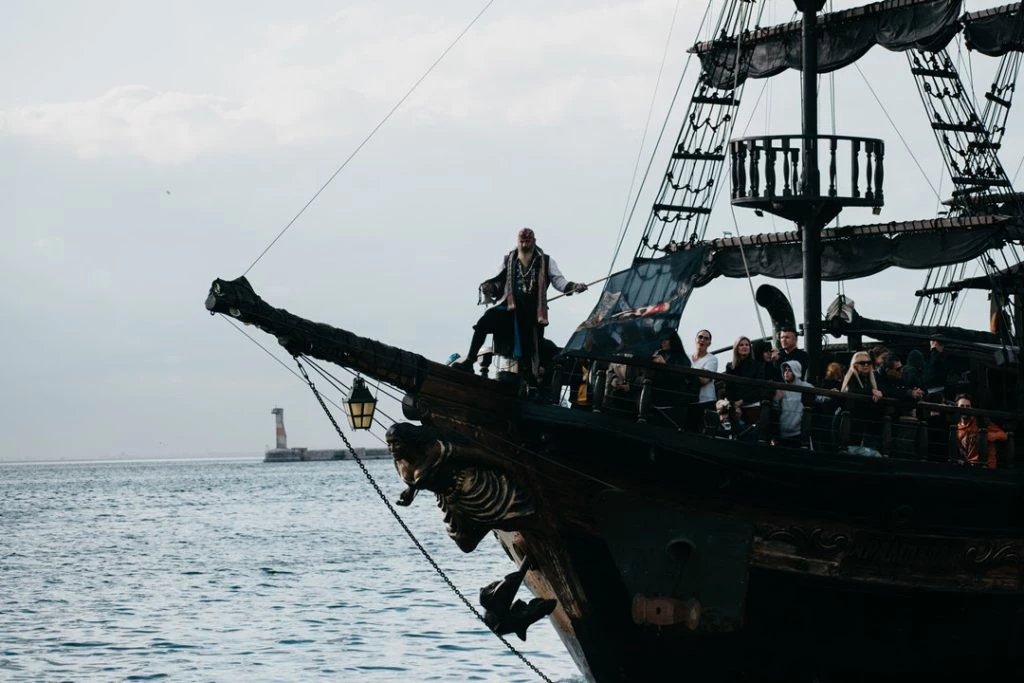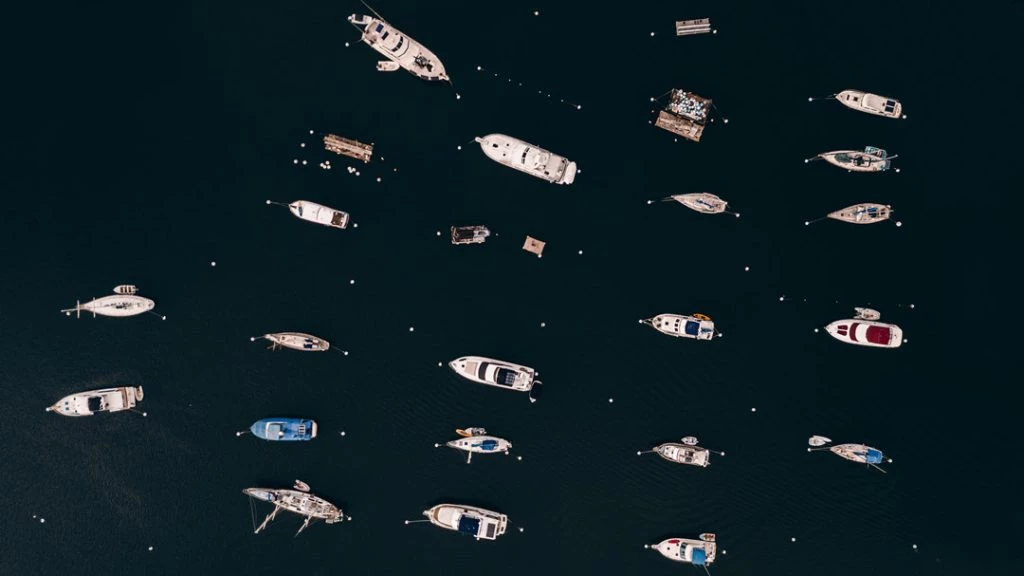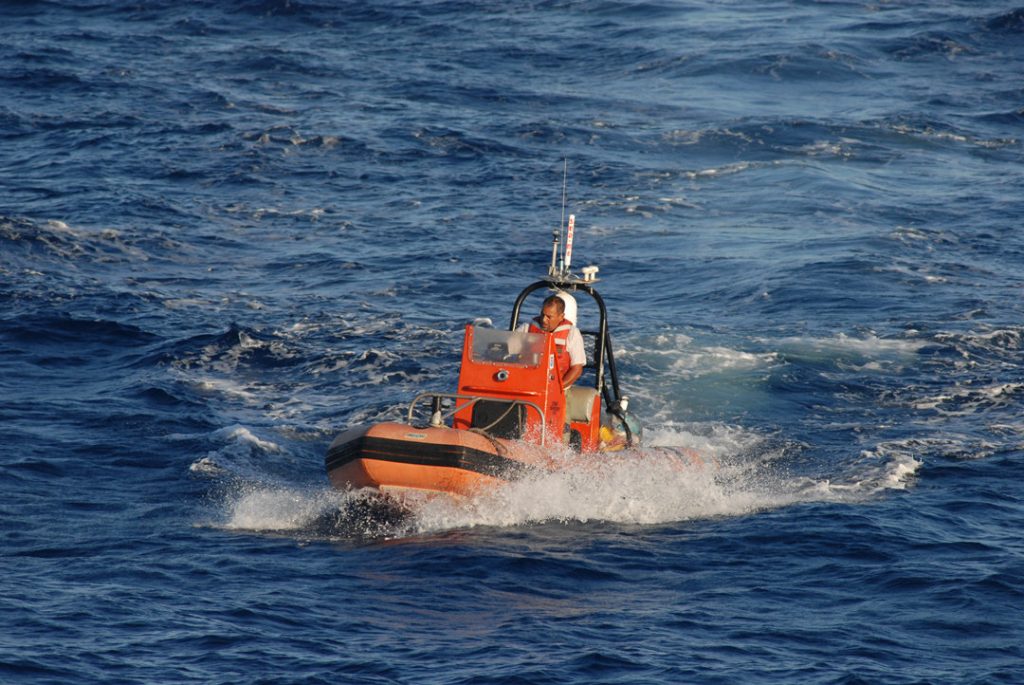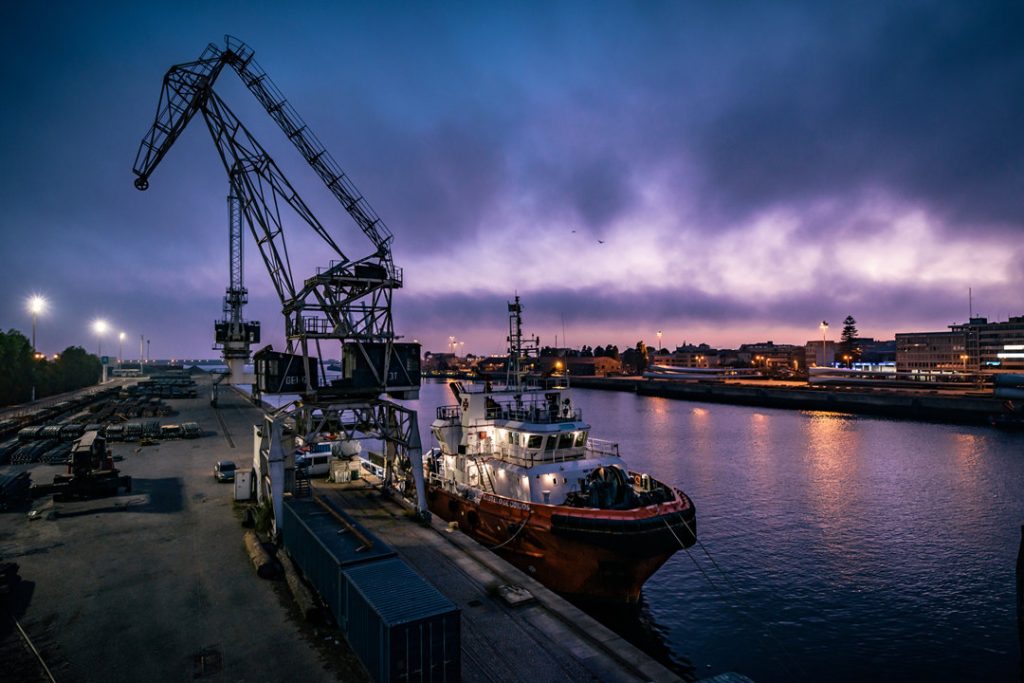The maritime industry, deeply rooted in history, plays a vital role in the global economy by handling approximately 90% of world trade. As this sector expands, it faces new challenges—from tangible threats to invisible cyber vulnerabilities. Maritime security isn't just about protecting ships; it also involves environmental preservation, economic growth, and ensuring human safety. These issues influence how everyone in the industry, from ship owners to insurers, operates and manages costs. In this article, we'll explore key aspects such as port security, counter-terrorism efforts, risk assessment models, and the crucial role of cybersecurity. Let's dive right in! Maritime security is a complex and multifaceted concept, ranging from ensuring port security to safeguarding the welfare of sailors. It involves a comprehensive approach to protecting various elements within the maritime domain. In essence, maritime security can be broken down into four key areas: Ecosystem Health: One critical aspect of maritime security is the preservation of marine ecosystems. Efforts are directed towards preventing and mitigating activities such as marine pollution and illegal fishing to maintain the ecological balance of the oceans. Global Trade and Transportation: Maritime security is intricately linked with economic development, particularly in the context of global trade. Approximately 90% of the world's trade is facilitated through maritime transportation. Protecting shipping routes and ports, along with preventing illegal trade activities, becomes imperative for ensuring a country's economic prosperity. Order at Sea: Maritime security is connected to the maintenance of order at sea, including protection against threats such as piracy and robbery, in order to ensure national security and stability. Human Safety: Maritime security is also directly linked to human security, especially in terms of guarding against illegal activities such as human trafficking. Ensuring safety on and off ships and guarding against potential human disasters is an important task in maintaining human security. The increased awareness of maritime security dates back to the late 1990s and early 2000s, with a notable surge after the events of 9/11. This heightened awareness led to a growing interest in protecting against terrorism in ports and at sea. National and international organizations responded by establishing and evolving various maritime security standards, exemplified by the ISPS Code developed in 2002 in response to terrorist attacks. In practice, maritime security involves active surveillance, inspection, and proactive procedures to detect and minimize threats, both intentional (such as terrorism) and unintentional, to ensure the overall safety and security of maritime activities. The vast and intricate maritime domain, a linchpin for global trade and resource transportation, confronts an array of security challenges that demand vigilant attention. A significant challenge faced by the maritime industry is the pervasive issue of cargo theft in the U.S., amounting to a staggering $15 to $35 billion enterprise. This criminal activity affects various entities, including seaports, airports, trucking companies, and shipping companies daily. Cargo theft is not limited to high-value goods such as semiconductors; even everyday items like food and beverages are targeted. For instance, a thief in the Seattle area posed as a Safeway employee, attempting to steal over $700,000 worth of king crab for resale. Similarly, in Spain, thieves stole 12,500 gallons of extra virgin olive oil, emphasizing the diverse range of targeted products. Supply-chain security faces various challenges, each with the potential to negatively impact businesses. Bogus companies, often operated by organized crime, may pick up goods but never deliver them to their intended destination. Corruption can seep into the supply chain through bribery of officials, drivers, and warehouse managers, facilitating theft and redirection of goods. Smuggling poses an ongoing challenge, with the trafficking of both drugs and people emerging as pressing concerns. Despite advancements in the maritime industry's anti-narcotics efforts, traffickers are continually innovating their methods. For instance, they have started concealing drugs within vessel piping systems for entire voyages. The 2015 refugee crisis spotlighted the issue of human smuggling, which has become a lucrative enterprise for criminal networks. These smugglers leverage sea routes to facilitate illegal migration. Human smuggling is closely tied to grave human rights violations and fatalities, especially in maritime contexts. The loss of refugees' lives in the Mediterranean Sea serves as a poignant reminder of the urgency to address human smuggling. This urgency is compounded by the fact that these networks are intricately connected to other organized criminal activities, including terrorism, human trafficking, and money laundering. The CW-25E VTOL drone, equipped with the MG-150E gimbal camera, captures video footage of illegal smuggling with remarkable precision. Featuring a 30x zoom capability, this drone ensures effective monitoring from a safe distance. The maritime industry is grappling with a new challenge – the growing threat of cybersecurity at sea. The industry must adapt swiftly for safer seas. Maritime cybersecurity involves protecting vital company data, like cargo and employee details, from exploitation. In today's digital age, safeguarding IT systems, ship hardware, and preventing data leaks is paramount. Cybercriminals can also target electronic systems controlling vessels, leading to costly consequences as the industry becomes more automated. Maritime cyber risk measures how vulnerable a tech asset is to potential threats, impacting operational, safety, or security aspects in shipping due to compromised information. The shipping industry is currently grappling with threats like vessel hijacking, both physically and through IT system hacking. Since 9/11, global shipping authorities have aimed to enhance maritime security. Ports, with their busy and sprawling nature, create an environment where terrorist activities can go unnoticed. The constant flow of trucks allows for the discreet movement of people and weapons. Ports near urban areas provide ample hiding spots and escape routes after an attack. Terrorist organizations exploit ports for smuggling, often collaborating with organized crime. This illicit activity extends beyond physical security, highlighting vulnerabilities in the global trade system. Maritime security faces a persistent challenge in the form of piracy on the high seas. Despite centuries of evolution, piracy remains a significant and complex threat to global shipping. According to the International Maritime Bureau (IMB), there were 115 incidents of piracy and armed robbery against ships in 2022, compared to 132 in 2021. Half of the incidents in 2022 occurred in Southeast Asian waters, particularly in the Singapore Straits. Piracy disrupts trade routes, increasing costs for shipping companies. In 2013, Towergate found piracy's global impact, revealing the costs of military protection, insurance, and security guards in the hundreds of millions. Rerouting ships incurs expenses like increased mileage, fuel, and reduced annual trips. The toll on human lives is evident, with 1871 seafarers attacked and 73 kidnapped in West Africa, while Somalian waters saw fewer incidents but longer hostage detentions (1016 days on average). While maritime security traditionally focuses on human trafficking, migrant smuggling, and piracy, illegal fishing has become a significant issue. Illegal, Unreported, or Unauthorised (IUU) fishing happens when foreign vessels operate without permission in state-controlled waters, violating established rules on fishing times and harvesting. A Financial Transparency Coalition (FTC) study reveals that IUU fishing accounts for up to one-fifth of global fisheries catches, valued at around 23.5 billion USD annually. The economic losses, estimated at 50 billion USD, make it the third most lucrative natural resource crime after timber and mining. Africa faces a substantial challenge, hosting 48.9% of identified vessels involved in IUU fishing, with 40% concentrated in West Africa, a global epicenter for these activities. Additionally, illegal marine pollution, involving the unauthorized discharge of pollutants into the sea, has escalated, presenting a more severe threat than ever before. Extracting oil from the ocean floor carries inherent risks, including spills and explosions, with significant consequences for marine ecosystems and coastal communities. Between 2007 and 2018, 33 offshore oil rigs exploded in the U.S., causing rare but severe outcomes, including fatalities. The Deepwater Horizon explosion in 2010 stands out as one of the most notable incidents, resulting in the largest oil spill in history. Triggered by a sudden burst of natural gas, it claimed 11 lives and spilled four million barrels of oil into the Gulf of Mexico over 87 days. BP, the responsible company, spent over $14 billion on cleanup between 2010 and 2015, with the overall disaster cost estimated to exceed $65 billion. Safeguarding our maritime domains requires a multifaceted approach that combines international cooperation, advanced technologies, and innovative solutions. In maritime surveillance, traditional methods like patrol boats, aerial patrols, and high-frequency radio monitoring are common. Patrol boats visually identify suspicious activities but have limited coverage. Aerial patrols offer broader coverage but still miss some areas. High-frequency radio monitoring gives valuable vessel movement info but is limited by frequencies. Technological advances introduce new methods, such as the Automatic Identification System (AIS) for real-time vessel tracking. Radar tech works well in varied conditions, enhancing surveillance reliability. Satellite tech covers larger areas, monitoring vessel behavior changes. Underwater sensors track underwater activities for a comprehensive view. No surveillance method is perfect, emphasizing the need to integrate various technologies and human expertise. Combining modern tech with traditional methods ensures a clear, detailed maritime activity picture for effective surveillance. To enhance physical security at ports, focus on technology and human aspects. Use smart sensing tech like infrared sensors and motion detectors, along with intelligent fencing systems, to monitor and prevent unauthorized access. Access control checkpoints can benefit from advanced authentication tech like fingerprint recognition and iris scanning. Surveillance goes beyond CCTV; employ intelligent video analytics and drones for timely threat identification, especially in challenging conditions. Unmanned patrol boats with autonomous navigation enhance patrolling efficiency on land and water. Train security personnel using virtual reality simulations for improved emergency response. Integrate smart chip technology into port security cards to prevent identity forgery. Regular security training ensures authorized personnel can effectively use these systems. Establish a comprehensive incident response plan in collaboration with local law enforcement and emergency organizations for quick and coordinated responses to unexpected incidents. Regularly assess vulnerabilities in both onboard IT and operational technology (OT) systems. Understand the specific cyber threats tailored to your organization's operations, cargo type, and geographic location. Develop a dynamic risk management plan that prioritizes vulnerabilities based on their likelihood and impact, implementing mitigation strategies accordingly. Enforce robust security measures without compromising usability. Implement strict password policies, limit access to critical systems, and utilize multi-factor authentication where feasible. Keep software and firmware up to date to promptly address known vulnerabilities. Safeguard systems by segmenting IT and OT networks, preventing the spread of cyberattacks between them. Prioritize secure communication protocols, employing encryption for all data transmissions, whether onboard or ashore. Consider cyber insurance to mitigate potential financial losses resulting from cyberattacks. Stay ahead of emerging threats by subscribing to threat intelligence feeds. Proactively identify and address vulnerabilities through simulated cyberattacks, utilizing techniques like red teaming and penetration testing. From piracy and terrorism to illegal trafficking and environmental threats, the vastness and complexity of the seas demand a specialized skillset to ensure safety and security. Maritime security training equips individuals and organizations with the knowledge, skills, and procedures to navigate these risks and protect vital interests. Risk assessment and intelligence sharing play a crucial role in maritime security. By thoroughly identifying vulnerabilities in infrastructure, vessels, and procedures, we gain a more comprehensive understanding of potential security risks. This not only helps strengthen preventive measures but also enhances our capability to respond to unforeseen events. While implementing risk assessments, analyzing trends and patterns of maritime crime becomes paramount. In-depth analysis of past incidents allows us to identify patterns in criminal activities, enabling us to more accurately predict and prevent future events. This proactive approach contributes significantly to achieving positive outcomes in ensuring maritime security. Furthermore, fostering collaboration and information exchange among stakeholders such as law enforcement agencies, coast guards, shipping companies, and port authorities is indispensable in ensuring maritime security. By establishing close cooperative relationships, parties can share intelligence, experiences, and resources, creating a more coordinated defense. This multi-agency collaboration not only strengthens security awareness but also enhances overall efficiency in responding to emergencies. Establishing robust partnerships is a crucial step in ensuring maritime security. This necessitates collaborative efforts from governments, international organizations, private sectors, and civil societies. By fostering close cooperation among these entities, we can more effectively address maritime security challenges. This includes sharing intelligence, resources, and technology to collectively combat activities like piracy, illegal fishing, and other threats. To enhance public awareness of the importance of maritime security, we need to strengthen education and outreach. This can be achieved through conducting awareness campaigns, organizing workshops, and utilizing social media platforms. Simultaneously, it's essential to encourage community involvement, prompting them to actively report suspicious activities, thereby strengthening overall societal focus and support for maritime security. Technology and innovation play pivotal roles in safeguarding the vast expanses of our oceans. From advanced surveillance systems to cutting-edge communication tools, these developments contribute to more effective and proactive strategies. Autonomous drones are transforming maritime safety. Unlike human pilots needing rest, these drones patrol continuously, boosting the chances of spotting suspicious activities. Take the JOUAV CW-30E VTOL drone, for example. It's equipped with high-tech cameras, radar, infrared imaging, and lidar, providing a thorough understanding of the maritime environment. With the ability to take off and land on moving ships, lasting up to 480 minutes in the air, covering 200 km without frequent recharging, it excels in performance. This maritime drone uses advanced AI algorithms for real-time analysis of sensor data, autonomously identifying threats. When a threat is detected, it Optical Store Fixtures/Furniture optical shop fittings,optical store displays,optical shop displays,optical shop furniture,optical shop cabinets Optical Shop Solution Provider , https://www.cwjdisplay.comWhat is Maritime Security?
Common Issues with Maritime Security
Cargo Theft
Drug Smuggling And People Trafficking
Cybersecurity Threats
Terrorist Threats

Piracy

Illegal Fishing and Environmental Damage

Offshore Oil Platform Accidents

Maritime Security Strategies and Solutions
Surveillance and Monitoring

Port Security Measure

Cybersecurity

Maritime Security Training
For Seafarers and Shipboard Personnel:
For Port and Shore-Based Personnel:
For Government Agencies and Regulators:

Risk Assessment and Intelligence Sharing
Partnerships and Collaboration
How Can Maritime Security be Improved: Technology and Innovation
Autonomous Unmanned Aerial Vehicles (UAVs)